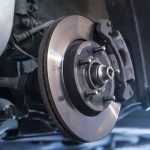One of the biggest causes of repeat repairs when a head gasket is replaced would be the procedure for tightening down the bolts was not followed correctly. Head bolts must be tightened in the correct order and to the proper amount of torque. Tightening sequences and specifications are available in your car service manual that will also include the step by step repair procedure for your model.
Most cylinder heads are tightened in a sequence that starts in the middle and then moves out towards the ends. The bolts are generally tightened in two or three stages. If the final torque is 100 foot-pounds the bolt may first be tightened to 50 foot pounds all away around before the final specification is reached.
Why follow the procedure
Find Your Online Car Repair Manual Today! ->>
Engine coolant must flow between the cylinder head and the engine block. The gasket seals these two components together and provides a passageway for the coolant to flow. Another fluid that needs to flow between these two components is engine oil. This gasket allows oil to reach the cylinder head and then flow back down to the oil pump again by using holes or passageways.
The head gasket also seals the intake stroke as well as the combustion pressure generated from the upward movement of the piston. It then has to survive the ignition of the compressed fuel charge when the cylinder reaches top dead center.
What are head gaskets made of
Most modern gaskets or made of a dense composite facing material with a solid steel core. This material is more forgiving and can provide better sealing when using two different types of metals. Most modern cylinder heads are made of aluminum yet still many engine blocks are made of steel. This composite material requires a stainless steel fire ring around the combustion chamber area to protect it.
Many of the latest generation aftermarket gaskets include a bead sealant that increases clamping pressure around troublesome areas such as cooling passages and oil galleys. In most cases these new types of gaskets provide long life. But if you have to replace a head gasket follow the procedure to the letter and do not skip any steps or repeat failure will be likely.
My previous article was about engine gaskets. You can view it as well as other articles I have written on the blog home page. This next link takes you there from this page about cylinder head gaskets. Or you can head back to the homepage and see what this online auto repair website is all about.









